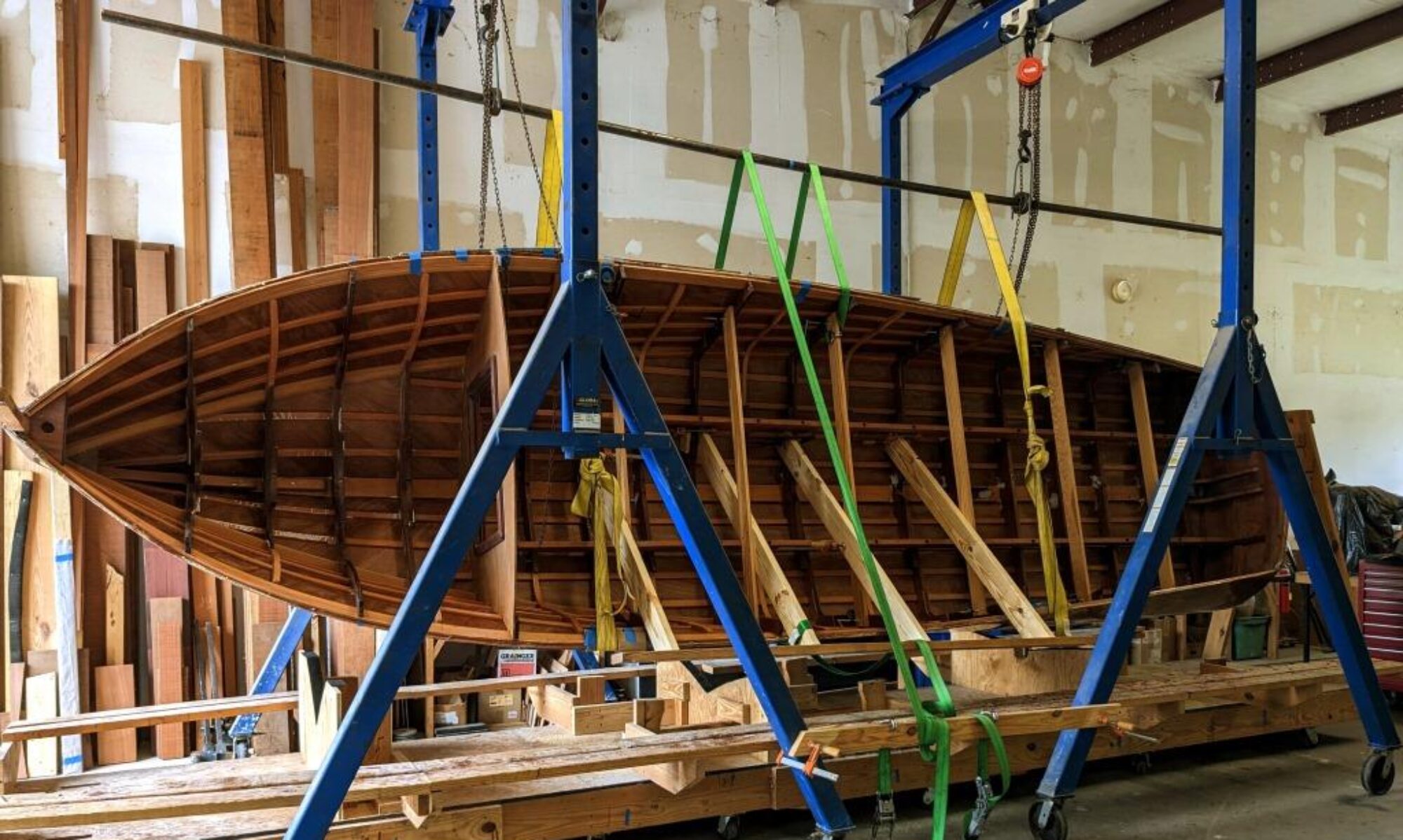One of the projects in refurbishing the Key West Sportsman is installing a new trolling motor. And of course there’s a mounting block for quick release of the motor. I call it a puck. At any rate, the deck of the boat where this puck will be mounted isn’t level, and it needs to be bolted securely without warping it. That means we need to make a custom shim. Continue reading “Making a Shim to Mount Hardware”
Man Overboard!
Every captain worth going boating with has thought about what could happen if he or she went overboard with the engine running. It’s a very dangerous scenario, and yet very few of us use the tether that’s supplied that will kill the engine if we stray too far from the helm. Hey, I’m guilty too. I’ve been knocked out of my boat and I wasn’t wearing the darn tether! Let’s just say the incident might have involved a little too much enthusiasm initiating a “power turn” and leave it at that. Luckily my friend was on board and he could stop the motor, and then start it again and drive over to me so I could climb aboard. Continue reading “Man Overboard!”
Hull-Deck Joint Gelcoat Repair

In my last post I discussed the importance of the hull-deck joint and how I repaired it on the Key West 1900 center console currently in my shop. Now that the structural repair has been accomplished, let’s talk about cosmetics. After all, we want the boat to look pretty again. Our goal is not just good-as-new structurally, but cosmetically as well!

As you can see, quite a bit of excavation and filling was required to get rid of all the stressed and cracked fiberglass. Now we have to cover that in gelcoat, the same material that was used in manufacturing the boat originally. The trick is to get a good color match. After 20 years, even if we had a batch of gelcoat from the original manufacturing run, it wouldn’t match the color of the boat now due to the fading effects of the intense sun here in South Carolina. So you have to blend your own color.

Having done that, I just layered on coat after coat until it was a little bit proud of the surrounding area, knowing that I would have to sand it smooth. In this case, it was worth it to construct a plywood dam that recreated the curve I wanted in order to define the sheer line (the line of the deck you see as you look at it from the side). With the dam in place, I could load it up with gelcoat and scrape it off even with the top of the dam.

Next comes the process of sculpting the gelcoat to the final shape. You have to take your time, being careful not to sand off too much. Of course if you do, you can always add another layer. But you have to wait a day for it to cure. Finally, polishing to a nice shine, and a coat of wax completes the repair. Good as new in all respects!
Hull-Deck Joint Repair

The 1999 Key West 1900 Sportsman center console boat that we’ve been hired to re-power needs some other TLC. If you’ve been following along, you know we checked the hull for water penetration and de-watered it in a previous post.

In my evaluation, I noticed that the hull-deck joint had separated for about 8 feet on the port side. This is a key structural element of any boat, and an issue that needs to be fixed. Key West uses a “shoe box” type of joint where the deck piece has a 1-1/2 inch flange that fits down over the top edge of the hull topsides. The joint is hidden by the rub rail, and is screwed and glued with 3M 5200, a very tenacious adhesive. Just imagine how much stronger a shoe box is if you glue the lid on. If you try to push in the side of the box, under the flange, it caves in pretty easily until you glue it to the top. Then it becomes a rigid, monocoque structure. Continue reading “Hull-Deck Joint Repair”
De-Watering the Key West 1900 CC

Last time I talked about weighing the boat to determine if it had gotten water in the foam core. I was pretty sure it wasn’t an issue, but then an opportunity presented itself to make sure. So this is how I did it.
In the process of cleaning and de-greasing the bilge, I took out the auxiliary oil tank for the 2 stroke outboard, and I took out a broken battery tray to replace it. Both of these had been screwed down to the sole of the bilge, and it looked like the sealant around the screws had failed. I suspected after 20 years, some water had gotten in these holes. Continue reading “De-Watering the Key West 1900 CC”
Key West 1900 Sportsman Restore and Repower

I’m really excited about our newest project in the shop. I’ve been asked to restore and repower a 1999 Key West 1900 center console Sportsman. It’s currently powered by a 1999 Mercury Mariner 135hp Optimax 2 stroke engine. We’ll be changing out the engine, replacing the push-pull cable steering with hydraulic, adding an automatic shallow water anchor, and updating the trolling motor. Also adding a bimini top, refurbishing the dashboard, and checking all electrical and plumbing systems.

The first task after picking the boat up was to check it’s weight. As you may know, Key West uses closed-cell foam to provide positive flotation for boating safety, filling almost every chamber in the hull. After 20 years, the foam can become saturated if there has been water intrusion. Happily, this boat weighed what it was supposed to–eliminating concern about water saturation.

So now we can turn to making her young again. Stay tuned as we step through the process during the coming weeks.



